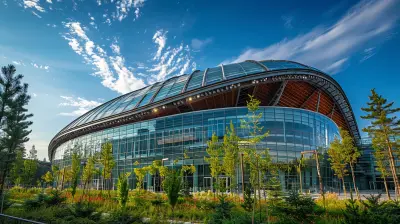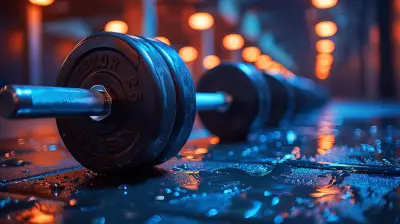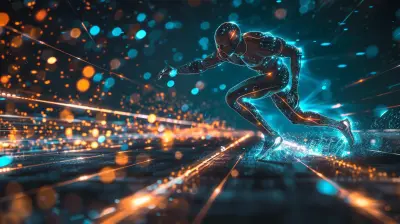The Difference Between Steel and Graphite Shafts: Which Is Best?
4 October 2025
When it comes to golf equipment, debates are a dime a dozen — and one question that constantly comes up is: _“Should I go with steel shafts or graphite shafts?”_ It might seem like a small piece of the puzzle, but trust me, the shaft can make a huge difference in your performance, feel, and even your scorecard.
So let’s break this down, golfer to golfer. Whether you’re looking to add distance, improve control, or reduce strain on your joints, understanding the difference between steel and graphite shafts is key. We'll dig deep into the pros, cons, and which one might suit your game best.
What Exactly Is a Golf Shaft?
Before we start picking sides, let’s get one thing clear — the golf shaft is that long stick between the club head and grip. It’s basically the engine of your club. It determines everything from how fast you can swing to how the club feels in your hands.And like any engine, there are different models — primarily steel and graphite. Each offers a unique ride.
Steel Shafts: The Classic Performer
Steel shafts have been around since forever. They're the original workhorses of the golf world, and there's good reason they’ve stuck around.🛠️ Built for Control
Ever feel like you have no clue where your shot is going? Steel shafts might change that. They’re stiffer and heavier, which gives you more feedback throughout the swing. That means you can _feel_ the clubhead better, adjust, and bring more consistency to your shots. Old-schoolers love that.💪 Who Usually Plays Steel Shafts?
- Mid to low handicappers- Players who value accuracy over distance
- Golfers with faster swing speeds
- Those who prefer a heavier feel
✅ Pros of Steel Shafts
- Better accuracy and control- More durable (very hard to damage)
- Usually cheaper than graphite
- Ideal for stronger players who can handle the weight
❌ Cons of Steel Shafts
- Heavier, which can cause fatigue during a long round- Not as forgiving on mishits (you'll feel those vibrations)
- Doesn’t add much distance

Graphite Shafts: The Modern Edge
Enter graphite — lighter, more flexible, and definitely flashier. These shafts are all about maximizing power while taking it easy on the body.🪶 Light As a Feather
Graphite shafts weigh less than steel (sometimes by as much as 50 grams). This makes them easier to swing, especially for players with slower swing speeds. More speed = more distance. It’s just physics.Imagine trying to swat a fly with a broomstick vs. a fly swatter. Which one's gonna get the job done with less effort?
🧓 Who Typically Uses Graphite Shafts?
- Beginners- Seniors
- Players with slower swing speeds
- People with injuries or joint pain
- Women and juniors (lighter weight is easier to handle)
✅ Pros of Graphite Shafts
- More distance thanks to faster swing speed- Softer feel; less harsh on your hands/elbows
- Available in more flex options
- Great for those recovering from injuries
❌ Cons of Graphite Shafts
- Less accurate for strong, fast swingers- More expensive than steel
- Can wear out over time (yes, shafts "age")

A Head-to-Head Showdown: Steel vs Graphite
Let’s pit these two shaft types against each other in key categories and see which comes out on top.| Feature | Steel Shaft | Graphite Shaft |
|--------|-------------|----------------|
| Weight | Heavy | Light |
| Distance | Moderate | High |
| Accuracy | High | Lower |
| Shock Absorption | Low | High |
| Durability | Very Durable | Less Durable |
| Cost | Lower | Higher |
| Swing Speed | Needs High Speed | Forgives Low Speed |
| Feedback | Excellent | Softer Feel |
| Vibration on Mishits | Noticeable | Dampened |
Let’s Talk Swing Speed
You’ve probably heard this term thrown around a lot. Swing speed is a crucial factor when choosing your shaft material. Why? Because shaft flex affects how well the clubface meets the ball. Too stiff or too whippy, and your accuracy and power fly out the window.- Fast swingers (90+ mph): Go for steel. It can handle that energy.
- Moderate swingers (75-90 mph): Either could work, depending on your goals.
- Slower swingers (below 75 mph): Graphite will help you launch the ball better.
Not sure of your swing speed? Most golf stores or instructors can do a quick fitting to give you the numbers.
Feeling vs Feedback: A Personal Preference
One thing that often gets overlooked is how the club feels in your hands. Steel gives you honest feedback — you’ll feel the good shots and the bad ones. It’s like a brutally honest friend: helpful, but not always pleasant.Graphite is more of a supportive buddy. It absorbs shocks, cushions mishits, and feels smoother overall. Less "zing" on poor connections.
If you’ve got wrist or elbow pain, graphite might be a game-saver. Steel can be harsh on your joints over time.
Cost: The Budget Debate
Let’s face it, golf is not a cheap sport. So if budget is on your mind, steel shafts usually come out on top. They’re more affordable across the board — from irons to drivers.Graphite can run you up to $100 or more per shaft, especially if you're going with premium brands or custom fits. That said, the benefits often justify the price, especially if you're using your clubs as a long-term investment.
Combo Sets: Best of Both Worlds?
Here’s a fun twist — many modern golf sets now offer combo shafts. You may find graphite shafts in your longer irons or hybrids and steel in your shorter ones. Why?It’s all about optimization. Graphite helps with distance where you need it (longer clubs), while steel keeps you dialed in for control on approach shots.
So if you’re stuck choosing, maybe... don’t choose. Go hybrid (yes, pun intended). It’s like ordering a surf and turf — why pick just steak or shrimp when you can have both?
Which Shaft Is Best for You?
Ah, the million-dollar question. Unfortunately, there’s no one-size-fits-all answer. But here’s a cheat sheet to steer you in the right direction:| Type of Golfer | Recommended Shaft |
|----------------|--------------------|
| Senior Golfer | Graphite |
| Beginner | Graphite |
| Low Handicapper | Steel |
| Fast Swing Speed | Steel |
| Slower Swing Speed | Graphite |
| Joint Pain or Injuries | Graphite |
| Distance Seeker | Graphite |
| Control Freak | Steel |
Final Thoughts: Follow the Feel, Not the Fads
If you’re still sitting on the fence, remember this — it’s all about what _feels right_ for your swing.Go try out both shaft types at the driving range or during a club fitting session. Feel the difference for yourself. Sometimes, your body tells you what charts and specs can’t.
Think of it like choosing a guitar. You could read spec sheets all day, but until you strum it, you don’t really know if it’s your jam.
And one more thing — don’t let ego decide for you. Don’t stick with steel just because the pros use it, or jump to graphite because it sounds high-tech. Your clubs should match your game, not your pride.
Choose what helps you play better, swing easier, and enjoy the game more.
FAQs: Steel vs Graphite Shafts
Q: Do graphite shafts break easily?
A: Not easily, but yes, they are generally more fragile than steel. Treat them with care — no tossing your clubs, even if you shank one into the woods!Q: Can I mix steel and graphite shafts in my set?
A: Absolutely. Many golfers do this and see great results. It’s all about what works for you.Q: Is graphite only for beginners?
A: Nope. Even pros use graphite, especially in drivers and fairway woods. It’s all about matching the right shaft to the right swing.all images in this post were generated using AI tools
Category:
GolfAuthor:

Umberto Flores
Discussion
rate this article
1 comments
Solara Pace
Love this breakdown! It’s so helpful to understand shaft choices for improving our game! 🎉⛳️
October 29, 2025 at 5:46 AM

Umberto Flores
Thank you! I'm glad you found the breakdown helpful for your game! 🏌️♂️


